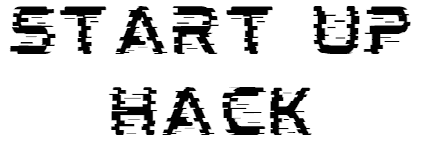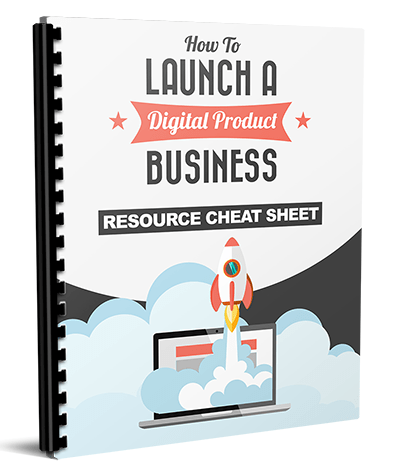This is repurposed content written by James Fleischmann with the original link below.
Ping He built four products totaling about $255k/mo in revenue.
I caught up with him to learn how he did it. Turns out, his first success happened because he ignored traditional indie hacking wisdom. And his biggest success happened because he positioned himself as a first mover in AI, even though he wasn’t using AI.
Here’s what he had to say. 👇
Innovate in existing markets
James: How did you get started?
Ping: There was no entrepreneurship culture in my family growing up, but I spent a summer with my uncle during high school. He’s a street vendor who travels and sells random things.
I remember liking the freedom that he enjoyed.
James: Did you become an entrepreneur right away?
Ping: No, in 2009, I was in Silicon Valley working in the semiconductor industry. I decided that I wanted to build a side project, so I started with an e-commerce website.
I needed a logo. And I became really impressed with the logo contests at 99designs.
James: So you started a competitor?
Ping: Yes, I started a logo contest website called 48hourslogo.
It’s important to build products that scratch your own itch. I’ve done that with all my businesses.
James: And you were okay with going up against a big competitor like that?
Ping: I like to innovate in existing markets.
James: Why?
Ping: You know exactly who your customers are and what search keywords you should target to find them.
James: How did you compete?
Ping: I targeted the niche keyword, “logo contest”, to find customers. And then I differentiated by setting the contest starting price at half the price of 99designs.
James: Some say competing on price is a “race to the bottom”.
Ping: I didn’t think too much about that at the time. I simply felt that I would have been more than happy to pay half the price and get half the design options when I used 99designs.
James: Where is 48hourslogo at now?
Ping: It’s at $100k/mo.
First mover in AI (kinda)
James: What happened next?
Ping: As that grew, I noticed that a lot of “custom logo designs” were basically the same templates being used over and over again by the designers. So I started LogoAI to automate the logo creation process.
James: And how’s that doing?
Ping: It’s at $150k/mo.
James: When did you start it?
Ping: In 2018.
James: So you were building AI products before it was cool.
Ping: Well, not really. “AI” was just marketing.
James: How so?
Ping: After running 48hourslogo for several years, I was pretty familiar with logo design, and I knew this would be the next step — replacing human designers with AI.
But there was no AI back then, so I generated the designs from templates.
James: So the name was more of a goal than a reality at the time.
Ping: Essentially. And I’ll say that I got lucky with the LogoAI domain name.
Running a $255k/mo portfolio
James: Are you working on anything else?
Ping: Recently, I’ve been working on uBrand — an AI-assisted branding platform for entrepreneurs. It’s at $5k MRR.
James: It sounds like each of these has a different model.
Ping: 48hourslogo is a traditional marketplace business model. LogoAI is a usage-based model. uBrand is a SaaS model.
James: And you run this $255k/mo portfolio on your own?
Ping: I never brought on any partners or investors because it started as a side project and grew quickly. But I have a small team of eight people.
James: What’s your day-to-day like?
Ping: In the morning, I work on the routine tasks such as answering support emails in my home office.
I meet my team members in our coworking office around 2pm on Mondays, Wednesdays, and Fridays to talk about the projects they are working on and brainstorm new ideas. We have a super efficient team because we have been working together for years.
James: Why not have your team handle the support?
Ping: I like to keep tabs on the support emails because I get lots of product improvement ideas from them.
Focus on long-term growth
James: Let’s talk about growth.
Ping: Indie hackers tend to spend more time building than marketing.
James: True. And you?
Ping: My rule is to split my time and effort 50/50.
James: Where do you focus your marketing time?
Ping: I’ve grown my businesses mostly via organic SEO. It’s a core expertise of mine.
James: Is SEO still a good bet for indie hackers?
Ping: Absolutely. I think founders spend too much time on Product Hunt launches and not enough time on SEO.
I’m such an SEO advocate that I even launched linktopia.io — a link-building community for SaaS founders.
James: How’s that doing?
Ping: It went online about a week ago and I got my first paid customer yesterday.
James: Congrats! So what’s your SEO process?
Ping: I’d recommend the following three basic steps to set up your website for SEO success:
- Research the keywords that you want to target and work them into your webpage titles.
- Set Up a blog to write about related topics and create internal links.
- Get backlinks. I like to get them from other founders, hence Linktopia.
James: Simple enough. Has SEO changed since you started?
Ping: Not really… But I don’t keep track of any so-called Google algorithm updates.
James: Why not?
Ping: I don’t try to beat Google. It’s better to simply tell Google about the product or service you provide with convincing landing pages and then mention them (via backlinks) whenever you have a chance.
James: Do you have any other SEO tips for us?
Ping: Research the keywords related to your product or service before building your product.
James: Smart. Did anything else help you grow?
Ping: One thing that worked really well was incentivizing customers to share their logo designs.
James: How did you incentivize that?
Ping: I gave them the design for free if they got 20 likes.
I also do a lot of organic marketing by simply creating profiles on websites like IH and commenting on posts related to my product.
It’s important to leave mentions of your website because Google will pick up these traces and your search results will improve.
James: Makes sense
Ping: But my main advice is this: Don’t always take the shortcut.
James: What’s wrong with shortcuts?
Ping: Indie hackers and solopreneurs have limited bandwidth, so focusing on short-term gains is tempting. But it saves time in the long run to focus on long-term, cumulative results.
Build an MVP; not a survey
James: Any final nuggets of indie hacking wisdom before we wrap up?
Ping: Build an MVP.
I don’t like the idea of validating a potential market with a survey or just a landing page like so many people are suggesting.
James: Why not?
Ping: It doesn’t capture the user’s true intentions. The information they see is too limited.
Instead, just build and launch the MVP. You will learn a lot more during the building process than you will from empty responses from a survey.
James: Where can people find you?
Ping: Check out Linktopia if you want to up your SEO game. My other products are LogoAI, uBrand, and 48hourslogo.
Original Source: Click here


